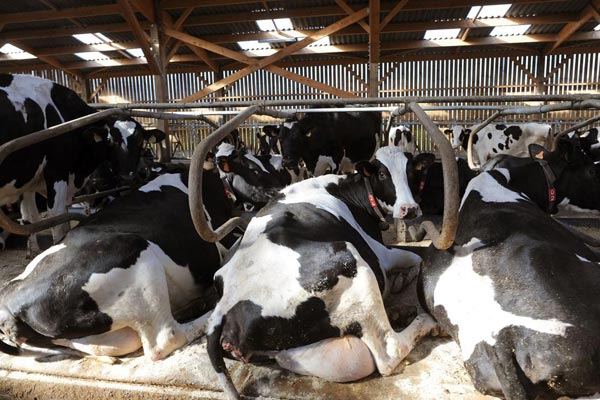
It is possible for farmers to guarantee high economic returns by adding to their stock through artificial insemination. However, due care must be taken. First, the farmer requires to keep a record of when he expects the animal to come on heat. For most animals, this is a range of 18 to 24 days for cows and 19 to 20 days for heifers from the hour the standing heat started. It is advisable to start tracking the animal the day before this expected day to allow for any variation.
The farmer should track the animal’s behaviour to catch the time the animal first shows heat signs and noting this down. Then she should continue tracking the animal to note the time it starts allowing other animals to mount (it stands willingly to be mounted). This is called standing heat.
Any inseminations before this time and up to five hours immediately after this time has little chances of succeeding as the egg will be released about 30 hours later while the sperm will only last for up to 12 hours. Inseminations done between five to 20 hours after beginning of standing heat have the most excellent chances of succeeding. Maximum fertility is assured for only 15 hours during the heat period.
The inseminator when called by the farmer must respond within this time to avoid losing this advantage. As a general rule, animals observed to be on heat in the morning hours should be inseminated late afternoon. Animals observed in the afternoon and evening should be served in the morning hours. Excellent chances of conception will therefore be achieved only if farmers make the extra investment required to catch their animals in standing heat. If this is done the farmer will get to know each animal well and be able to reduce the observation workload with time.
Farmers should know that many animals exhibit heat signs more at night so be ready to check on the animals at least every two hours both day and night so as not to miss the moment For some cows, this checking may be necessary for up to eight days once a year but the income to be made by getting cows pregnant on time is great. Farmers with many animals may want to invest in technologies that assist in making standing heat detection easier such as chin-ball marker, tail chalking and ICT technologies like cameras.
Bleeding may be seen three to five days after the end of heat signs. For majority of cows it means the animal did not conceive (some do conceive despite bleeding). The farmer should use this sign to maintain keenness on the need to monitor the cow closely during the next expected heat. When fertilisation occurs, about 22 per cent of embryos will die.
However, when this happens the farmer will see his cow coming back on heat about 21 days later. These embryo deaths are caused by biological factors beyond the control of anyone such as incompatibility of the egg and semen, hormonal imbalances, if the cow is losing weight, and sub-clinical infections of the reproductive tract. Because of these embryo deaths, farmers can only hope for the best that their animal will not be a victim. If it happens, they should prepare for another insemination. This explains why despite when no problems exist at all, some animals still require more than one insemination.
So if farmers want to be in control of getting their cows pregnant, they should always plan for a minimum of at least two inseminations for their cow so as to be ready with the money, energy and time required to get their cow pregnant within the recommended time of a maximum of 85 days after the previous calving. Research has shown that if you have 100 animals you expect only about 65 to conceive on 1st insemination; the rest will require a 2nd insemination.
It is recommended that animals not conceiving after the 2nd or third insemination should be looked at by a vet to determine if they have a condition that can be treated. If the vet determines the cows are difficult breeders or are infertile, you need to get rid of it as soon as possible as it will be uneconomical to keep it.